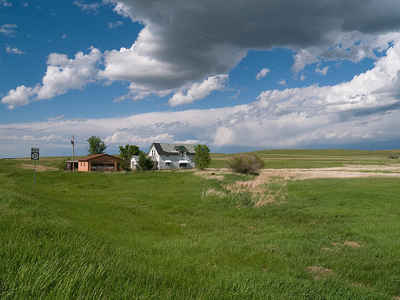North Dakota State Honorary Equine
Nokota Horse

(E. f. caballus)
Adopted in 1993.
The Nokota breed may well be those distinct horses descended from Sioux Chief Sitting Bull's war ponies. Some still run wild in Theodore Roosevelt National Park. These horses not only have historic value for all westerners, but they have significant cultural and historic value to some of our Native American peoples. Many have urged the State of North Dakota to designate the Nokota horse, (E. f. caballus ,) as an "honorary state equine" and this status was achieved in 1993. The NPS, however, has yet to manage the horses in a way that would preserve a historically accurate herd.
North Dakota State Honorary Equine: Nokota Horse

Nokota horses traditionally ranged in the Little Missouri Badlands of SW North Dakota, appearing in the late 19th century. There are less than a thousand Nokota horses in the world. The majority of these horses reside in Linton, North Dakota. Leo and Frank Kuntz have spent the past 20 to 30 years preserving these horses. The horses are believed to be descendants of the Sitting Bull ponies as well as horses which escaped or were released from the ranching industry. They come out of the Theodore Roosevelt National Park. These are wild horses whose bloodlines are believed to stem back to Chief Sitting Bull's horses.
The Nokota horse is a feral and semi-feral horse breed located in the badlands of southwestern North Dakota in the United States. The breed developed in the 19th century from foundation bloodstock consisting of ranch-bred horses produced from the horses of local Native Americans mixed with Spanish horses, Thoroughbreds, harness horses and related breeds. The Nokota was almost wiped out during the early 20th century when ranchers, in cooperation with state and federal agencies, worked together to reduce competition for livestock grazing. However, when Theodore Roosevelt National Park was created in the 1940s, a few bands were inadvertently trapped inside, and thus were preserved. The National Park Service enclosed the Nokota's traditional range area and in doing so "captured" numerous Nokota horses. The NPS' initial intention was to eradicate these horses, although a small demonstration herd is now "officially" sanctioned.In 1986, the park sold off a large number of horses, including herd stallions, and released several stallions with outside bloodlines into the herds. At this point, brothers Leo and Frank Kuntz began purchasing the horses with the aim of preserving the breed, and in 1999 started the Nokota Horse Conservancy, later beginning a breed registry through the same organization. Later, a second, short-lived, registry was begun by another organization in Minnesota. In 2009, the North Dakota Badlands Horse Registry was created, which registers the slightly different type of horses which have been removed from the park in recent years. Today, the park conducts regular thinning of the herd to keep numbers between 70 and 110, and the excess horses are sold off.
The Nokota horse has an angular frame, is commonly blue roan in color, and often exhibits an ambling gait called the "Indian shuffle". The breed is generally separated into two sections, the traditional and the ranch type, which differ slightly in conformation and height. They are used in many events, including endurance riding, western riding and English disciplines.
North Dakota Century Code
TITLE 54 STATE GOVERNMENT.
CHAPTER 54-02 STATE EMBLEMS, SYMBOLS, AND AWARDS
SECTION 54-02-15
54-02-15. Honorary equine.
The Nokota horse, in recognition of the significant role the breed has played in the history of this state, is designated an honorary equine of North
Dakota.
Taxonomic Hierarchy: Nokota Horse
Kingdom: Animalia
Phylum: Chordata
Class: Mammalia
Order: Perissodactyla
Family: Equidae
Genus: Equus
Species: E. ferus
Subspecies: E. f. caballus








